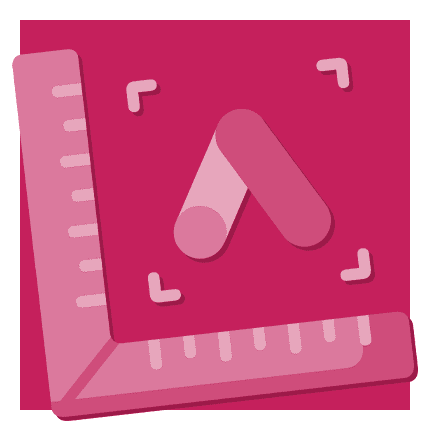Using Google Ads remains a proven method to drive traffic to your website. A successful Google Ad will entice a potential customer to hit your landing page, where you then have the opportunity to carry them further along the buyer’s journey. After all, if someone is searching for something relevant to your business and they see your ad, then they’re already interested.
Google Ads is a PPC marketing option, meaning that it gives you a lot of budgetary control. You only pay when your advert has been so successful it’s earned a click, and the fact that there’s no minimum spend makes Google Ads well worth dedicating some time to.
While the size of your Google Ad shouldn’t be something that you worry about too much, the fact is that choosing the wrong display ad size will limit the impact of your advertising campaign.
Here’s what you need to know about choosing the best Google Display Ad size.
Why Does Google Display Ad Size Matter?
Different sizes of Google Ads get different results and different CTRs. For example, banner ads continue to get lower and lower CTRs, and consumers are making greater use of ad-blocking tools. The result is that banner-sized ads are now among the weakest-performing size of Google Ad available.
What this means for you is that you shouldn’t stick to using just one or two different display ad sizes. Using only the most popular sizes of Google Ads is simply limiting. Not only that, but when you use a more varied range of ad sizes, you’ll get a greater ROI.
That’s because some websites where your ad will be displayed will want to have large images, while others will want smaller ones. Some will block your half-page ad but will reward a banner.
So, having as many versions of your Google Ad as possible, in as many standard sizes as are available, is only beneficial. When it comes to managing your marketing budget, ROI is vital. The more ad sizes you can create, the better that ROI.
The Standard Google Ad Sizes
The following list of the most commonly used Google Display Ad sizes has the dimensions listed in pixels.
What’s often overlooked is that no matter what dimensions you choose for your Google Ads, the file size for each should never exceed 150kb. With that in mind, here are the recognized standard dimensions of Google Ads:
- 250 x 250 – Square
- 200 x 200 – Small square
- 468 x 60 – Banner
- 728 x 90 – Leaderboard
- 300 x 250 – Inline rectangle
- 300 × 250 – Medium Rectangle (currently the single most popular ad size as it performs well on all sizes of the device)
- 336 x 280 – Large rectangle (not great for smartphone viewing, but excellent for PCs when embedded within text or added to the end of an article)
- 120 x 600 – Skyscraper
- 160 x 600 – Wide skyscraper
- 300 x 600 – Half-Page ad
- 970 x 90 – Large leaderboard
However, things change if you’re optimizing for smartphones and other devices, which you absolutely should be. Not optimizing for mobile use these days is like having to ask what is an IP phone to a business leader. It’s a sign you’re not keeping up with the times.
Smartphone screens are (obviously) smaller than desktop screens, which means being a little more careful about display ad size. Although the most popular sizes for Google Ad displays on mobile devices change regularly, at the time of writing they are:
- 300 x 50 – Mobile banner
- 320 x 50 – Mobile banner
- 320 x 100 – Large mobile banner
Again, it’s important not to overlook the fact that simply having one or two Google Ads designed in different dimensions is not great for ROI. Always aim to have at least five size variations if you’re working hard on your lead generation strategies.
What Your Google Ad Needs
One of the reasons why so many business owners and marketers struggle with getting the right Google Ad size is because there’s a lot of information that needs to be included in ads.
Without the right ingredients, an advert simply falls flat, resulting in a lower ROI that doesn’t reflect the expected PPC trends of 2022. As well as getting the sizes right, you also need to make sure that your ads have as many of these elements as possible:
Branding
The goal with branding is always to aim for consistency. So your Google Ads need to have your logo, use your brand colors, and speak in your brand’s tone of voice. Likewise, the landing page that customers hit when they click on your ad needs to continue that brand consistency.
CTA
Without a call-to-action, it’s likely that your ad will never lead to a sale. The goal of all adverts is to make a viewer perform an action, and that’s why your CTA is so vital.
Use action words like “buy now”, “watch”, “don’t miss out”, and “try”. If you’ve taken the time to create a target consumer profile, then you should already know the pain points of your target audience. Use that knowledge to create more powerful CTAs.
Images
Product ads without images are simply not going to be very effective. Having an image of your product should be considered mandatory, even if you’re designing smaller ads. You can also include the price of the product alongside the image to further boost CTRs.
USP
While this may be considered as part of your branding, your USP should be treated separately. Use your USP in your ad heading or within the description. The clearer your USP, the easier it will be for potential customers to learn why they should buy through you.
With businesses of all sizes and sectors working harder on streamlining workflow and collaboration with the likes of a cutting-edge UCaaS service or high-tech automation, it’s easy to overlook the importance of Google Ad size. Get the ingredients right, though, and a range of differently sized ads could become one of your most useful selling assets.
Perfect Your Google Ad Sizes Today
The good news is that it doesn’t take very long to get your Google Ad sizes fully optimized and ready to go. Don’t forget to A/B test your different ad sizes to see the best performers. This can help you fine-tune those ads so that they have even more potency.
When it comes to choosing the best Google Ad sizes, too, don’t get too lost in the dimensions. While those dimensions are important, design should remain the priority. If the design of your ads isn’t perfect, the size of that ad will become irrelevant.
Optimize both size and design, and your next Google Ads campaign could transform your potential to grow.




